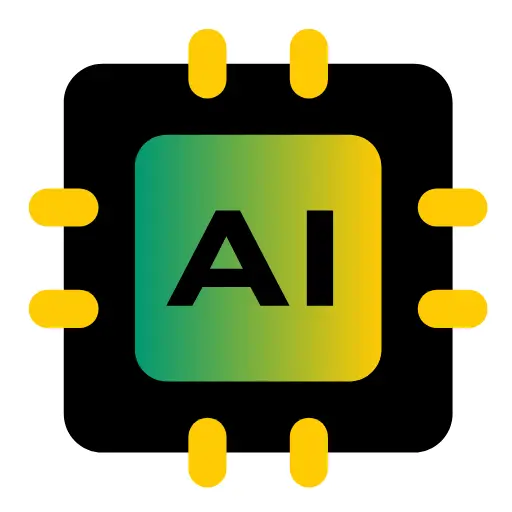In today’s digital age, Artificial Intelligence (AI) is revolutionizing the way we interact with technology. From virtual assistants to autonomous vehicles, AI has become an integral part of our daily lives. But how does AI work? What powers these intelligent systems? This detailed, SEO-friendly article will break down the inner workings of AI, explain key concepts, and help you understand the technology that’s shaping the future.
What is Artificial Intelligence (AI)?
Artificial Intelligence refers to the simulation of human intelligence in machines that are programmed to think, learn, and make decisions. AI systems can analyze data, identify patterns, and improve over time with minimal human intervention. AI is designed to perform tasks that typically require human intelligence, such as:
- Speech recognition
- Visual perception
- Language translation
- Decision-making
- Problem-solving
Types of Artificial Intelligence
AI can be classified into three main types, depending on its capabilities:
1. Narrow AI (Weak AI)
Narrow AI is designed to perform a specific task. It is the most common type of AI in use today. Examples include:
- Siri, Alexa (Voice assistants)
- Google Translate
- Spam filters in email
2. General AI (Strong AI)
General AI can perform any intellectual task that a human can do. It possesses the ability to reason, plan, solve problems, and learn from experience. General AI is still theoretical and not yet developed.
3. Superintelligent AI
Superintelligent AI surpasses human intelligence in all aspects—logic, creativity, and emotional intelligence. This type of AI remains hypothetical and is often discussed in science fiction and ethics debates.
Core Components of How AI Works
To understand how artificial intelligence works, it’s important to examine the key technologies and components behind it.
1. Machine Learning (ML)
Machine Learning is the backbone of AI. It allows machines to learn from data without being explicitly programmed. ML algorithms identify patterns and make predictions based on input data.
- Supervised Learning: Uses labeled data to train models (e.g., predicting house prices).
- Unsupervised Learning: Analyzes data without labels to find hidden patterns (e.g., customer segmentation).
- Reinforcement Learning: Learns by trial and error, receiving rewards or penalties (e.g., training robots or game AI).
2. Neural Networks
Artificial Neural Networks (ANNs) mimic the structure of the human brain. These networks consist of layers of nodes (neurons) that process data and recognize complex patterns. Deep learning, a subset of ML, uses deep neural networks to drive image recognition, speech synthesis, and natural language processing.
3. Natural Language Processing (NLP)
NLP enables machines to understand, interpret, and generate human language. This is the technology behind:
- Chatbots
- Translation services
- Sentiment analysis
- Text summarization
4. Computer Vision
Computer Vision allows AI systems to interpret and analyze visual information from the world, including:
- Image classification
- Object detection
- Facial recognition
- Video analysis
5. Robotics
AI is often embedded into robots, allowing them to interact with the physical world, perform tasks, and even navigate environments autonomously.
The AI Workflow: Step-by-Step
Let’s explore the typical workflow of how AI systems are developed and operate:
Step 1: Data Collection
AI starts with data. This can include text, images, audio, video, or sensor data. The more diverse and extensive the dataset, the better the AI model can learn.
Step 2: Data Preparation
Raw data is cleaned and formatted for analysis. This involves handling missing values, normalization, and labeling in supervised learning scenarios.
Step 3: Model Selection
Developers choose a suitable algorithm or model architecture, such as decision trees, support vector machines, or deep neural networks.
Step 4: Training the Model
The model is trained using prepared data. It learns to associate input data with the correct outputs through numerous iterations and optimization techniques like gradient descent.
Step 5: Evaluation and Testing
The model is tested on unseen data to measure accuracy, precision, recall, and F1-score. This helps verify how well the AI can generalize to new situations.
Step 6: Deployment
Once validated, the AI model is integrated into a real-world application, such as a smartphone app, website, or robotic system.
Step 7: Monitoring and Maintenance
AI models must be monitored to ensure consistent performance. Over time, they may need retraining with new data to maintain relevance and accuracy.
Real-World Applications of AI
Artificial Intelligence is powering a wide range of industries and applications:
1. Healthcare
- Disease diagnosis (AI in radiology)
- Drug discovery
- Virtual health assistants
2. Finance
- Fraud detection
- Algorithmic trading
- Personalized banking services
3. E-commerce
- Product recommendations
- Customer service chatbots
- Inventory management
4. Transportation
- Autonomous vehicles
- Traffic prediction
- Logistics optimization
5. Education
- AI tutors
- Adaptive learning platforms
- Essay grading automation
Benefits of AI Technology
AI brings several advantages across sectors:
- Increased efficiency and productivity
- Reduction of human error
- 24/7 availability and automation
- Data-driven decision-making
- Scalable solutions
Challenges and Ethical Considerations
Despite its benefits, AI presents challenges:
- Bias in AI algorithms
- Lack of transparency in decision-making (black box models)
- Data privacy concerns
- Job displacement
- Ethical dilemmas in AI-powered weaponry or surveillance
Governments and organizations are working to create ethical guidelines and AI governance to ensure responsible development and use.
The Future of AI
The future of AI is both promising and transformative. Innovations like Generative AI (e.g., ChatGPT, DALL·E), Explainable AI, and AI-powered augmented reality are redefining human-machine interaction. As AI continues to evolve, it is expected to drive smart cities, advanced robotics, personalized healthcare, and much more.
Staying informed about AI technologies and ethical practices is essential for businesses, developers, and users to navigate this fast-changing landscape.
Understanding How AI Works is Key to Embracing the Future
AI is no longer science fiction—it’s a foundational technology that is reshaping every aspect of modern life. By understanding how AI works—through machine learning, neural networks, NLP, and computer vision—you gain insights into the powerful systems driving innovation today.
Whether you’re a student, developer, entrepreneur, or simply curious, learning how AI works equips you with the knowledge to leverage it responsibly and effectively.




